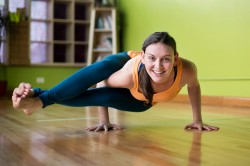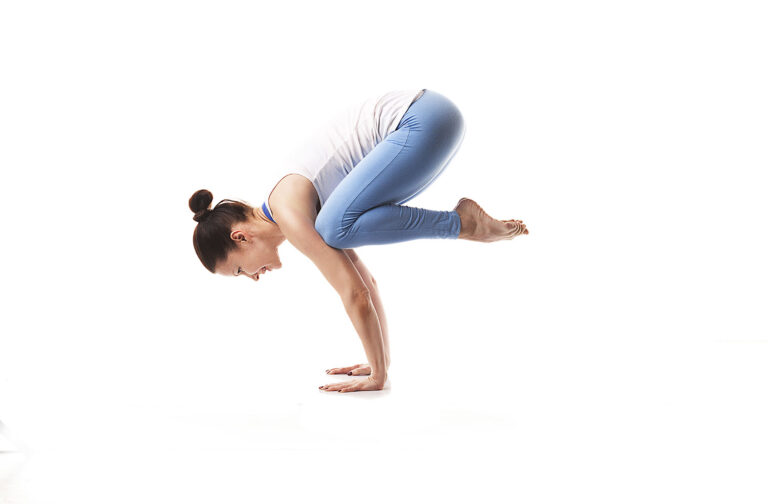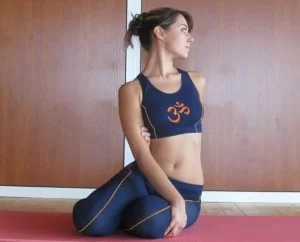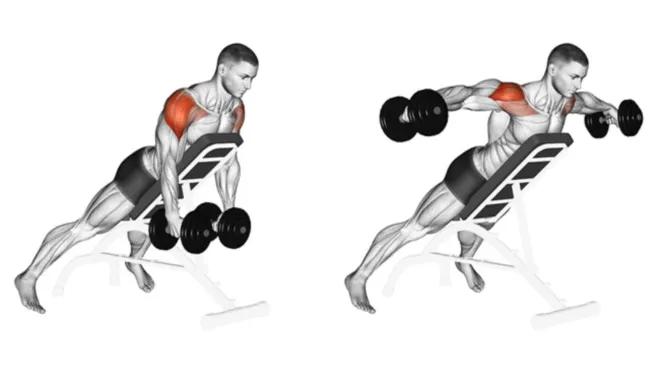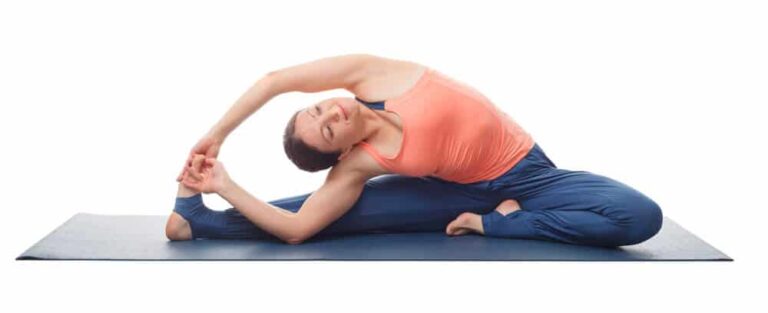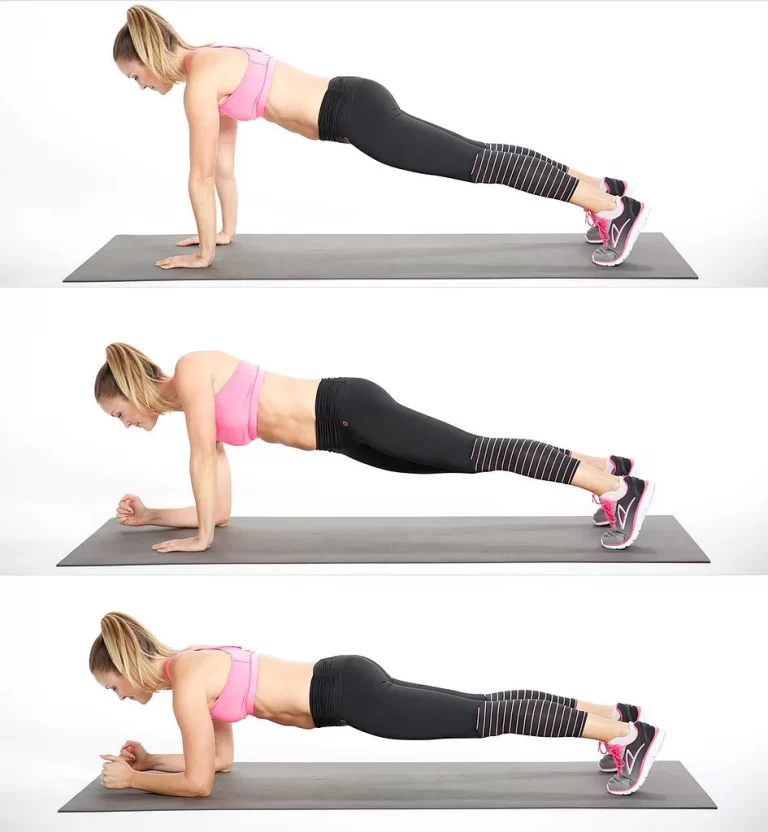Astavakrasana (Eight-Angle Pose)
Introduction
Astavakrasana is a sort of Yoga pose that is dedicated to Sage Astavakra. This is an evolved pose that is said to evoke the Manipura chakra. The name of this asana is a blend of two Sanskrit terms, ‘Asta’ which means ‘eight’, and ‘vakra’ which stands for bent (curved). Thus, in English, it is guided to the Eight-Angle Pose.
Astavakrasana is believed by lifting the entire body off the floor with both legs stretched to one side. This asymmetrical posture is an advanced-level approach as the body is balanced just on the arms.
What is Astavakrasana?
Astavakrasana, even known as the Eight Angle Pose, is a progressive hand balance pose with a lateral twist. The asana brings its name from the Sanskrit words ‘Ashta’ means eight, ‘vakra’ means curved(bent), and ‘asana’ means posture. While accomplishing the Astavakrasana series, your body is bent in eight diverse parts. These involve your chest, hands, neck, feet, and knees.
Astavakrasana discovers noted in the 1896 manual of gymnastics and is a part of stylish yoga. The asana is a challenging pose that involves balancing your full body only on your arms.
It is an interesting Astavakrasana story in Hindu myth. It says that when a sage was inside his mother’s womb, he was well utilized to listening to Vedas replicated by his father. Once his father replicated the Vedas inaccurately which created the sage giggle. The father then set a curse on his juvenile that he be born bent in eight parts.
Later in the theAstavakrasana story, the sage evolves into the spiritual guru of King Janaka. This asana stands for the stability of willpower in supporting you to achieve tranquility and stability.
How is Astavakrasana done?
Since Astavakrasana is a challenging asana, you require to master its form.
Sit comfortably in the Dandasana pose with your legs prolonged out.
Turn your right leg from the knee and hold your right foot with your left hand.
Get your right arm on the inside of the right thigh.
Keep your right foot with the left hand and extend the right leg up. Your right thigh must be relaxing on the upper shoulder of your right arm.
Put your right palm firmly on the floor beside your right hip.
Connect your right knee with the right arm.
Push your palms on the ground and lift your hips and legs off the floor.
Currently, bend your left knee and connect the left ankle with the right ankle. Stretch both legs towards the right.
Shift your weight ahead and turn your arms at the elbows while keeping your shoulders square.
Look ahead and breathe deeply for thirty-forty seconds.
To release the pose, straighten your arms and trunk and get your legs forward. Return to the Dandasana pose and rest your ankle.
Repeat on the different side.
Astavakrasana Benefits:
A few of the benefits derived from the approach of Astavakrasana (Eight Angle Pose) are as follows.
Stretches and Strengthens
The practice of Ashtavakrasana (Eight Angle Pose) helps to prolong and contract the diverse muscles, such as the biceps and triceps, the diaphragm, the muscles of the back, the abdominal and core muscles the psoas, pelvic floor muscles, the gluteus, quadriceps, and calves. This expanse helps to strengthen the wrists, elbows, arms and shoulders, chest, hips, knees, ankles, and backbone.
Energy and Endurance
Practiced to create strength in the body, Eight Angle Pose being a challenging arm balance pose helps to build endurance given that this posture stays extremely close to the ground and does not touch the ground. Hence staying in balance is tricky and requires endurance.
Awareness and Focus
Overlooking the limits and concentrating on the better parts of this Eight Angle Pose, the approach can be increased with full awareness of what is required while in balance. This awareness is towards the core and abdominal strength while utilizing the breath to increase the body off the floor. This focus and awareness instruct pupils to turn the torso while in an arm balance, and even extend the lower body.
Balance and Stability
With awareness, the approach of Ashtavakrasana can be mastered concentrating on keeping both the body and the mind stable. With no distractions in ideas, the physical body assists with balance and the intellect supports maintaining the body stable. Hence a wonderful practice to work on physical balance, and cognitive stability.
Inner Organs and Energy
The practice of Ashtavakrasana strengthens the abdominal muscles, getting awareness of the umbilicus, the area of the Manipura Chakra (Sacral Chakra). With the tightening of these muscles, they gain flexibility and strength, while even stimulating the organs in the abdominal place. This assists to produce energy in the body and even holds digestion in control.
Power and Confidence
Every difficult pose brings a sense of enjoyment when it is achieved, and when the pose challenges in many paths, like balance, twist, stretch, and forward bend, then, it is even more awarding. The practice of Eight Angle Pose brings the same feelings building power and confidence in the body as well as the intellect.
Toning and Lengthening
This all-around body-strengthening posture, maintains the body well-toned, including the abdominal muscles, the legs, arms, buttocks, hips, and sides of the back. With an all-around toned body, there is the scope of prolonging the backbone, thereby maintaining the original shape of the backbone.
Precautions
Before accomplishing any asana, you must know about its advantages, how to accomplish it, as well as its precautions. Because multiple times we do it wrongly, due to which we can bring loss rather than an advantage. In such trouble, you must know about its precautions before accomplishing it.
Accomplishing this asana on a vacant stomach every morning provides better advantages. If you are not able to accomplish it in the morning, then maintain in mind that you have not eaten anything for the last 3-4 hours while accomplishing it.
If you have any sort of elbow, wrist, or shoulder injury, you must avoid this pose.
A pregnant woman must avoid rehearsing this asana. they can Practice just beneath the supervision of a certified yoga professor. If you suffering from Carpal Tunnel Syndrome(Medil nerve compression). Astavakrasana is extremely intense hence practice its primary poses- Utthita Parsvakonasana and Uttanasana.
Contraindications
Avoid posture if you have an injury around your shoulders, wrists, elbows, (or any other joints in the body).
Do not attempt Astavakrasana with back aches, slumped discs, or any spinal problems.
Individuals with carpal tunnel syndrome (medial nerve compression) must not attempt this asana. Females during pregnancy must not try it.
It should not be practiced with an injury and surgery in the legs, hips, lower back, and pelvis.
A person with cardiac disorders, high blood pressure, and dizziness must reflect this pose.
Conclusion
The Astavakrasana is a difficult pose that you will value to subject yourself to, regularly. With this specific pose, you can bring the opportunity to push your body and bring additional awareness about yourself as you try to attain proficiency in it. While this posture might seem to be quite difficult in the beginning, the more you practice the more you will discover it getting easier for you.
As it occurs to be an advanced pose, you cannot expect any additional advancement. But with more time and exercise, you will be capable to accomplish it more smoothly.
FAQ
1. What is the story of Astavakrasana?
Astavakrasana( Eight Angle) Pose is an asana with a fascinating history. Dedicated to the Sage, Astavakra, the spiritual guru of King Janaka, is told that when the Sage was in his mother’s womb, his father, Angola, made several mistakes while reciting the Vedas. Hearing these, the unborn Sage giggled.
2. What is the variation of Astavakrasana?
There is an advanced version of Astavakrasana in which the body is twisted in the same path, except for the arms. In this deviation, the hand among the legs remains pressed against the floor, however, one forearm and the alternate arms are laid on the ground.
3. Why is it called 8 angle pose?
Astavakrasana poses are achieved by bending the body in eight diverse regions( angles); one in the chest, one in each hand, each foot, and each knee, The pose is even known as the Eight Angle Pose.
4. What are the benefits of Astavakrasana?
Eight-Angle Pose strengthens your back, arms, and stomach; and it stretches the back body and back of the legs. It enhances your posture and body awareness. Astavakrasana can boost energy, fight exhaustion, and help create confidence.
5. What are the contraindications of Astavakrasana?
Injury to the shoulders, arms, hips, neck, lower back, knees, pelvis, feet, and ankle are all contraindications that should be avoided. pupils with Carpal Tunnel Syndrome(medial nerve compression) should even avoid practicing this pose.

